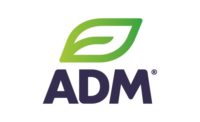Snack Food & Wholesale Bakery recently was able to talk to Todd Hassenfelt, senior director of eCommerce, Simple Mills, about COVID-19 trends and how Simple Mills has driven online sales by addressing these opportunities.
Liz Parker: What new opportunities has the COVID-19 pandemic created, as well as new challenges, for smaller and emerging brands?
Todd Hassenfelt: For emerging brands Like Simple Mills, it has meant an opportunity to gain consideration from more potential consumers looking for clean, delicious, and nutritious options. COVID-19 has disrupted consumer behavior in many ways, including the rise of online grocery, discovery of new brands due to significant out-of-stock situations, and more home cooking.
Simple Mills was in a good position to be nimble and as prepared as a company could be for each of these disruptions.
Simple Mills was already partnering with Instacart prior to COVID-19 and had some early learnings on the importance of an “always on” search campaign and its impact on overall awareness and sales.
Our Operations team successfully kept Simple Mills in a favorable position to handle the incredible demand from our customers, providing consumers the opportunity to either stock up or try Simple Mills for the first time (particularly if their regular brands were out-of-stock).
We all know how popular at-home baking has become this year which allowed Simple Mills’ baking portfolio (including products such as Artisan Bread Mix, Banana Muffin & Bread Mix, and Pizza Dough Mix) to experience incredible growth as consumers looked for better-for-you options and family fun activities
As for challenges, ours are very similar to what most companies are dealing with in terms of adjusting to a fully remote working environment, ensuring our employees are safe, and continuing to provide consumers with great products and valuable content via the Simple Mills blog.
LP: How does online grocery “equalize the playing field” with consumers vs. brick and mortar grocery shelves?
TH: Online grocery equalizes the playing field by giving all brands, no matter their size, the chance to be visible to the consumer via search campaigns, on-site activations, and smart content that improves organic search results. Brands are not limited to once or twice a year resets, but rather hourly changes to the online “shelf” depending on what search terms consumers are using and how strategically search campaigns are built.
While larger brands may have a more tenured relationship with retailers, online grocery allows for brands that are nimble, data driven, and focused on consumer trends to have an advantage. Brands that harvest popular consumer search terms and infuse them into both their content (for organic placements) and their search campaigns (for paid placements) have the best chance to be considered by consumers, without having to wait for new or expanded distribution. Brands can also launch innovation much faster online and gather consumer data on performance via online retailers and/or a DTC site.
LP: What sort of marketing needs to go on for this to happen?
TH: Consumers don’t search for brand taglines; they search for product attributes (i.e. gluten-free) and other non-branded terms. As a result, brands must rely on consumer search data to make sure that ad copy, product detail page content, and images all include search-related words or concepts that appeal to consumers. The more personalized a brand can be by using first-party data and keeping in mind that online retailers’ consumers vary by site, the better chance for conversion. Video is also important as people remember 80 percent of what they see, but only 20 percent of what they read—meaning the written copy must be done in a way to inspire conversion quickly, while video can achieve more of the brand awareness and consideration goals.
LP: How can companies highlight brand attributes like gluten-free, low-sugar, keto, paleo, and organic?
TH: Highlighting brand attributes will vary by company and are determined by the full cross-functional team. However, there are two approaches that can be taken no matter which attributes are deemed appropriate and relevant:
Infusing attributes within product titles, bullet points, and images on online product detail pages to reduce consumer confusion and increase conversions. Online grocery brands must first attract the algorithm’s attention before consumers will see anything, so effective keywords within a product detail page is critical. Savvy brands will use their secondary image to visually communicate the product’s features and sometimes use brief overlay copy.
Using attributes in hidden keywords so that consumers will not read it as they evaluate the brand, but the online algorithms will still use it for the organic ranking is also helpful.
LP: How is row-placement in search results critical to success?
TH: VERY important—70 percent of Instacart conversions are from products in the first row and almost 90 percent within the first three rows. On Amazon, about 90 percent of sales are earned on Page 1. For Brands to earn new and incremental customers and improve their organic ranking, they MUST be effective in their paid search campaigns and have data-driven copy. Visibility on the first row on all online sites is more critical than eye-level on a Brick & Mortar shelf, especially for consumers shopping on their phones. Share of voice on above the fold (ATF) placements is one of the most important KPIs for brands to consider when reporting results internally.




